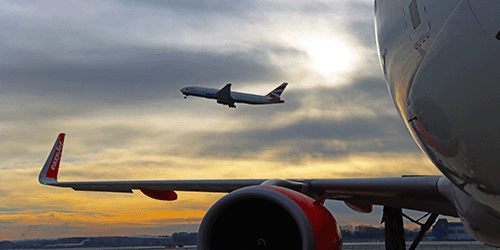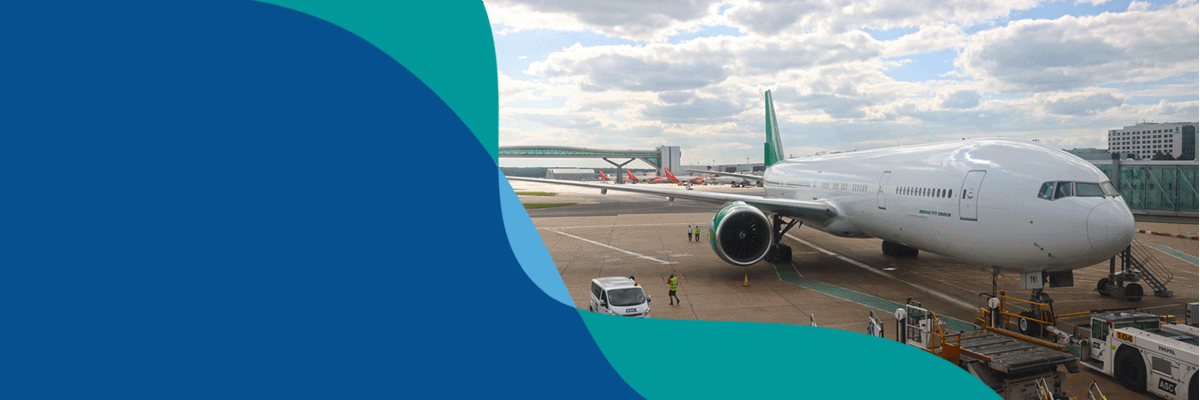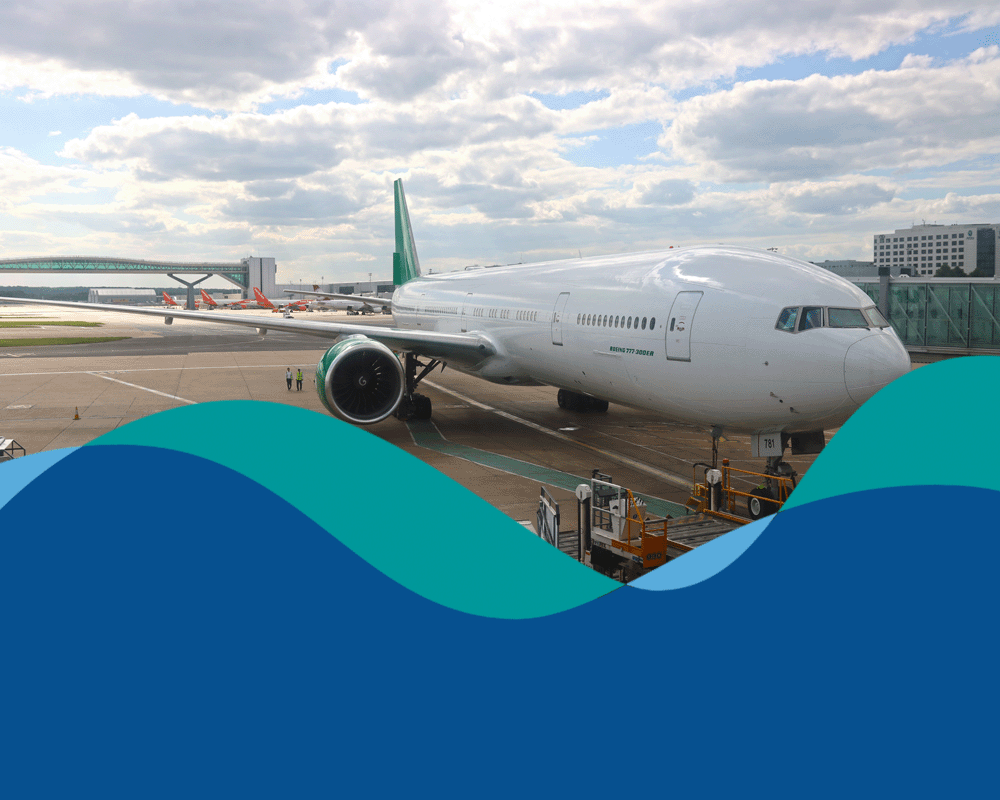Noise
It's our role to manage noise issues around the airport.
The policy framework and guidelines for managing noise are set at a national and international level. As the airport operator we manage noise locally.

We have several policies, work plans, mitigation schemes and agreements in place. We also carry out research, airspace trials and operational changes to find ways to further reduce the impact of aviation noise.
We are committed to reducing airport noise and have increased our focus on addressing this challenge. We know that noise remains a concern for local communities. While we can't get rid of aircraft noise completely, our goal is to reduce and manage it as best as possible.
Our strategy to reduce noise includes engagement with a wide range of industry and community stakeholders. We also have several reporting processes covering our obligations, actions and limits. These can be found in:
![]() The Section 106 agreement under the Town and Country Planning Act 1990. This is with Crawley Borough Council and West Sussex County Council.
The Section 106 agreement under the Town and Country Planning Act 1990. This is with Crawley Borough Council and West Sussex County Council. ![]() Our sustainability plan: the Decade of Change report.
Our sustainability plan: the Decade of Change report. ![]() Our Environmental Noise Directive Noise Action Plan for 2019 to 2025 (below).
Our Environmental Noise Directive Noise Action Plan for 2019 to 2025 (below).
We use our own engagement groups to discuss topics with airlines, air traffic control and community stakeholders. These groups help us to understand issues and explore practical solutions.
-
![]() Airport Consultative Committee (GATCOM) and its Steering Group.
Airport Consultative Committee (GATCOM) and its Steering Group. ![]() Noise and Track Monitoring Advisory Group (NATMAG)
Noise and Track Monitoring Advisory Group (NATMAG) ![]() Noise Management Board (NMB)
Noise Management Board (NMB) ![]() Section 106 Local Authority Engagement
Section 106 Local Authority Engagement
![]() Flight Operations Performance and Safety Committee (FLOPSC)
Flight Operations Performance and Safety Committee (FLOPSC)![]() Sustainable Aviation
Sustainable Aviation ![]() Department for Transport Aircraft Noise Management Advisory Committee (ANMAC)
Department for Transport Aircraft Noise Management Advisory Committee (ANMAC) ![]() Department for Transport Airspace and Noise Engagement Group (ANEG)
Department for Transport Airspace and Noise Engagement Group (ANEG) - Industry Resilience Group (IRG)
Under the Environmental Noise (England) Regulations 2006, we are required to produce a Noise Action Plan. This plan needs to provide a thorough and effective driver for aircraft noise management and mitigation around the airport.
Our Noise Insulation Scheme applies to eligible homes across Surrey, Sussex and Kent. Affected homes can apply for up to £4,300 plus VAT towards double glazing for their windows and doors.
We base the allowance on an industry price agreed between us and our supplier. This means you often get more than you expect. We have increased the allowance in line with inflation.
No changes apply to the areas eligible for the grant. The scheme boundary continues to include entire roads and villages.
Confirm if your property is eligible for the scheme using our Interactive noise insulation scheme map. We have previously written to those who are eligible with more details of the scheme and how to apply.
What is the aim of the Noise Insulation Scheme?
To help reduce the impact of airport noise on households most affected by aircraft noise from the airport as the number of passengers grows to 46 million per year (from just over 34 million passengers a year in 2012/13.
How long will the scheme run for and what are the critical dates for application?
The scheme has been in place since 2014 and was reviewed in 2021. Applications for noise insulation assistance continue to be accepted.
If my house is eligible, which windows and doors can I get changed through the scheme?
We propose that for those residents who fall within the scheme boundary any window or exterior door will qualify.
What parts of the house are not included in the scheme?
Interior doors and windows are not included in the scheme, along with conservatories as these are not classed as living space. Secondary glazing of doors is not generally seen as effective in reducing noise and so will not be offered. All rooms that serve a commercial purpose in a building are not eligible under this scheme. This includes offices, retail outlets and workshops.
How much can I get towards the cost, and are there options that will be free?
All replacement double glazing works at eligible properties can receive a maximum contribution of £4,300 plus VAT from us towards acoustic installation costs.
This allowance is based upon an industry price agreed by us meaning that you can often get more than you expect.
Can I have a mixture of replacement windows and secondary glazing?
Yes. If you apply, you may decide to have high-specification, replacement double-glazed windows fitted in rooms where they require a high-level of noise insulation, and standard, replacement double-glazed windows or secondary glazing in other rooms.
Why do my neighbours qualify for noise insulation assistance, but I don’t?
Households eligible for noise insulation assistance will have to lie within a specific boundary of noise exposure. The precise location of each household is defined by its unique address point, as defined by the Royal Mail and Ordnance Survey.
Great effort has gone into ensuring as much as possible that the scheme boundary line does not intersect individual houses and streets.
What is the noise exposure boundary? How do you determine what it looks like?
The core scheme boundary is based on a Civil Aviation Authority calculated 60dBA noise contour based on airport operation at 45 million passengers per annum. We have then amended this contour boundary to reflect local geographic layout resulting in an uneven boundary line. In addition to this, and in response to feedback, we extended this line 15km, both east and west outside the furthest contour, to reflect aircraft noise impacts from all arriving aircraft established on the centre line.
Am I limited to a certain supplier or suppliers of double-glazing as a condition of the scheme?
We have specified a single, specific, primary contractor for all insulation works.
My house is a heritage listed building; how do you propose to handle the noise insulation works in my case?
t is important in such cases that the Planning Department of the local authority concerned is fully informed. Planning consents, as required, should be obtained before any noise insulation measures are installed.
It may be possible to fit suitable noise insulation to listed buildings that are not offered as standard by the insulation provider, while preserving features. However, any additional costs associated with the provision of non-standard features for example Georgian bars, leaded glasswork and frosted glass will be wholly met by the applicant.
We will only contribute towards the elements of the works that fall within the standard range offered by the insulation provider.
I have already installed double glazing in my property, before finding out about this scheme, because of the noise of the airport. Am I eligible for a reimbursement of the costs involved?
No. We will only contribute to double glazing that has been agreed as necessary, by the appointed noise insulation surveyor in the initial survey, to increase noise protection still further.
The noise contours show that I am outside the eligible area? I am still troubled by the noise of the airport and feel that I should be eligible for assistance under this scheme.
Unfortunately, boundaries have to be drawn for any scheme. We recognise that some people may be disappointed. This scheme is only one of the ways in which we seek to minimise the impact of aircraft noise. The noise contours have considered all the forms of noise, from different flights and associated airport activity, which may have an impact. This scheme is a considerable improvement on the previous BAA scheme.
The size of the qualifying boundary was increased previously to from 26Km2 to over 40Km2 and the number of eligible houses increased by just fewer than 1,000. We believe this scheme remains innovative and effective in helping to mitigate any adverse effects experienced because of the airport.
How do I apply?
Our dedicated team can assist with any claims for noise insulation and liaise regularly with our contracted supplier on eligible properties and subsequent works.
For Noise Insulation Scheme enquiries, contact: noiseinsulationscheme@gatwickairport.com

